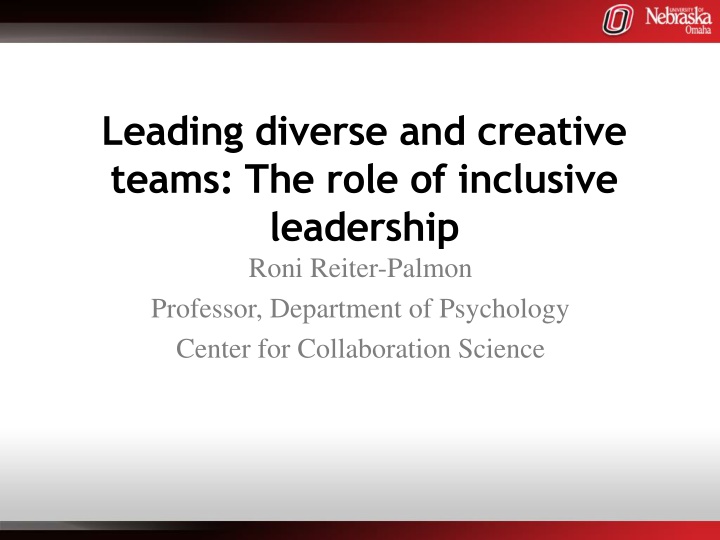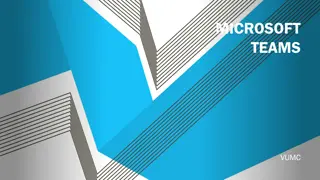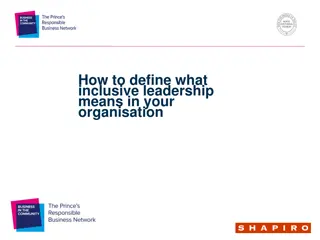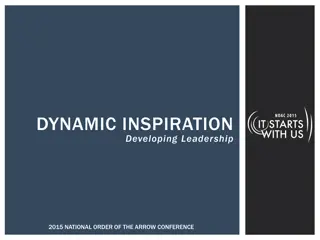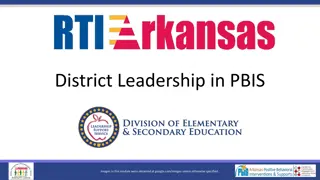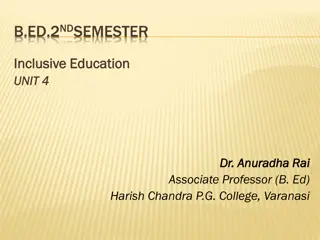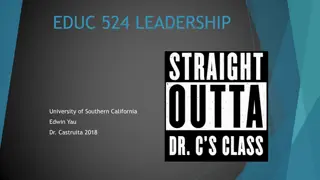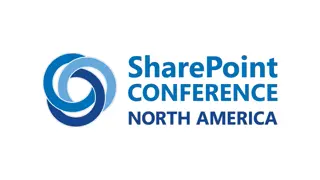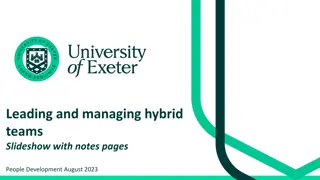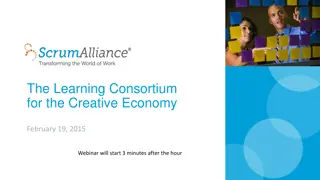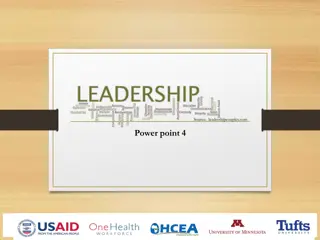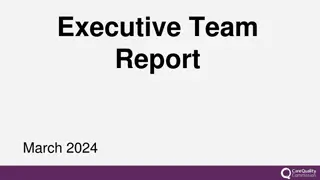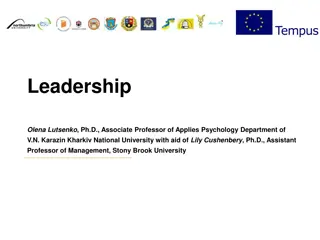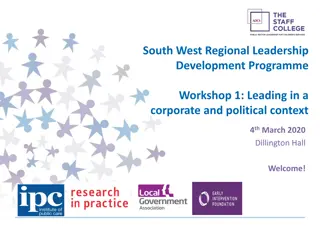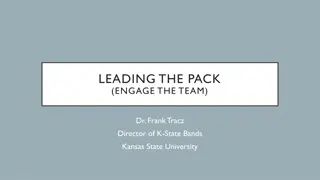Leading Diverse and Creative Teams: The Role of Inclusive Leadership
Roni Reiter-Palmon explores the pivotal role of inclusive leadership in fostering diverse and creative teams. Discover strategies to enhance team dynamics and productivity through inclusivity and collaboration skills.
Download Presentation

Please find below an Image/Link to download the presentation.
The content on the website is provided AS IS for your information and personal use only. It may not be sold, licensed, or shared on other websites without obtaining consent from the author.If you encounter any issues during the download, it is possible that the publisher has removed the file from their server.
You are allowed to download the files provided on this website for personal or commercial use, subject to the condition that they are used lawfully. All files are the property of their respective owners.
The content on the website is provided AS IS for your information and personal use only. It may not be sold, licensed, or shared on other websites without obtaining consent from the author.
E N D
Presentation Transcript
Leading diverse and creative teams: The role of inclusive leadership Roni Reiter-Palmon Professor, Department of Psychology Center for Collaboration Science
Why Creativity in Teams? Increasing complexity of problems Additional performance benefits from varied skills of the team members Creativity is defined as any product, process, or solution that is both original (novel) and useful (appropriate).
Team Creativity Much research on teams as a contextual variable (Woodman, Sawyer, & Griffin, 1993) Focus on individual creativity More recent interest in the construct of team creativity (Reiter-Palmon, Wigert & de Vreede, 2011)
Use the Input-Process-Output (IPO) model Input Team Characteristics Team Diversity Process Social Processes Cognitive Processes
In what ways are teams diverse? Demographic characteristics Gender Age Race/Ethnicity Nationality/Culture Personal Characteristics Personality Motivation Values
Functional Diversity Job/Position Department Discipline
Meta analysis by Hulsherger et al. (2009) Demographic diversity not related to creativity Functional diversity related to creativity Not enough information on personal characteristics
Strengths More information More diverse information More perspectives Cognitive benefits Weaknesses More difficulty in communicating More difficulty in developing trust Social deficits
Team Processes Social Processes Multiple models of important social processes (Mathieu et al., 2008; Rousseau, Aube, & Savoie, 2006; Salas, Stagl, Burke, & Goodwin, 2007) Commonalities across models Collaboration and Coordination Communication Trust and Psychological Safety Conflict
Social Processes - Collaboration Important for Dynamic situation Team adaptation Creativity (Burke et al., 2006; Janssens & Brett, 2006)
Collaboration Team goals that emphasize collaboration relate to idea generation (Mitchell, Boyle, & Nicholas, 2009) Collaboration is related to creativity and innovation in teams (Drach-Zehavy & Somech, 2001; Pearce & Ensley, 2004) Effective collaboration allows for integration of diverse perspectives (Mitchell, Boyle, & Nicholas, 2009)
Social Processes - Communication Internal Communication within the team External Communication outside of the team With other departments/teams in the organization Outside the organization (customers, suppliers, etc.)
Ancona and Caldwell (1992) Ancona and Caldwell (1992 Ancona and Caldwell (1992) External Communication Ancona and Caldwell (1992) One of the strongest predictors of team creativity (Damanpour, 1991; Hulsheger et al., 2009) Diverse teams engage in more external communication (Ancona & Caldwell, 1992; Keller, 2001)
External Communication Role of external communication Providing diverse information Weak ties related to creativity (Baer, 2010; Perry-Smith, 2006; Perry-Smith & Shalley, 2003) Developing Support for new ideas (Howell & Shea, 2006)
Internal communication Communication with members within the team Collaborative communication increases creativity (Lovelace, Shapiro, & Weingart, 2001) Negative forms of communication hinder creativity (Lovelace, Shapiro, & Weingart, 2001) Frequent communication hinder creativity (Kratzer, Leenders, & van Engelen, 2004)
Trust and Psychological Safety Linked to creativity and innovation (Carmeli & Spreitzer, 2009; West & Anderson, 1996) Linked to team member willingness to discuss information openly (Burke et al., 2006; Edmondson, 2004; Rank et al., 2004).
Trust and Psychological Safety Low trust causes disagreements and ambiguous information to be interpreted in a negative way (Nicholson & West, 1988; Salas et al., 2005; West & Richter, 2008)
Conflict Can be task or relationship based (Jehn, 1997) Hypothesized that task conflict may be beneficial (Kurtzberg & Amabile, 2001; Mannix & Neale, 2005)
conflict Mixed results regarding effect of conflict on creativity Relationship = negative Task = mixed Possible curvilinear relationship (De Dreu, 2006)
Social processes are interrelated and may have interactive effects on team creativity and innovation Low trust can lead to more conflict Communication increases trust and psychological safety trust and psychological safety increase communication Collaboration requires communication
Time as an important variable Social processes develop and change over time (team dynamics) Social processes may have different effects depending on timing within a project
Cognitive Processes Social Cognition - How individuals and teams think about teams and team processes Problem Solving (Reiter-Palmon, Herman, & Yammarino, 2008)
Cognitive Processes Received much more attention at the individual level than at the team level Individual models of cognitive processes are available Not clear how individual cognition then is aggregated to the team level
Current work focuses on social cognition How individuals and teams think about teams and team processes Shared Mental Models Reflexivity
Shared Mental Model Representation of knowledge or beliefs that are shared by team members (Cannon- Bowers, Salas, & Converse, 1993) Positive relationship with team creativity and innovation (Gilson & Shalley, 2004; Pearce & Ensley, 2004) SMMs may lead to too much similarity and conformity (Cannon-Bowers et al., 1993)
Team Reflexivity Team members reflect on the objectives and strategies and adapt them to current or anticipated circumstances (West, 1996) Reflexive teams can change their strategies and learn from past mistakes
Important antecedent of team creativity and innovation (Schippers, Den Hartog, & Koopman, 2007; Tjosvold, Tang, & West, 2004) Team reflexivity may not occur naturally (Muller, Herbig, & Petrovic, 2009) Instructions and minority dissent may contribute to team reflexivity (De Dreu, 2002; Muller et al., 2009)
Creative Problem Solving Processes Problem identification and construction Information gathering Idea generation* (lots of research) Solution evaluation and choice
What is missing? Individual cognition vs. team cognition What happens when team members need to put together these individual cognitions? How do we aggregate to the team level? Early and late processes (before and after idea generation)
Problem Construction During this process the problem to be solved is recognized and identified (Is there indeed a problem?) defined (What is the nature of the problem?) and constructed (What are the parameters of the problem to guide possible solutions?)
Based on past experiences with similar problems Problem Representation (Gick & Holyoak, 1983) Includes: Goals, constraints, information and procedures Typically, automatic application
Individual Findings Creative individuals engage in this process (Getzels & Csikszentmihalyi, 1975, 1976) Experts spend more time on PC (Voss et al., 1991) Deliberate PC (more time, more ways, instructions) results in creative solutions (Basadur, Graen & Green, 1982; Reiter-Palmon, et al., 1997) Focus on goals and restrictions (Mumford, et al., 1996)
Very limited research on team level problem construction How do teams construct problems? Similar individual problem constructions Different construction (rGap) (Cronin & Wiengart, 2007)
Large rGaps Lead to less integration, increased conflict, and lower creativity (Gish & Clausen, 2013; Weingart, Cronin, Houser, Cagan, & Vogel, 2005) Lead to increased creativity if differences are discussed (Leonardi, 2011; Weingart, Todorova, & Cronin, 2008)
Instructions to engage in problem construction PC teams were less creative (Reiter-Palmon, Wigert, Morral-Robinson, Hullsiek, Arreola, & Crough, 2011) PC teams were more original (Reiter-Palmon, 2017) PC teams had lower conflict and more satisfaction with process and outcome
Information Gathering and Sharing Cognitive process that relies on social processes (communication) Individuals search both within and outside the team for information Diverse teams have access to more information and more diverse information
Common information is more likely to be shared (Mesmer-Magnus & DeChurch, 2009) Do not always know what is relevant to others No direct studies on information gathering and sharing on creativity
Solution evaluation and selection Ideas are evaluated and choice is made to implement, refine or reject ideas Creative individuals recognize creativity (Basadur, Runco, & Vega, 2000; Runco & Chand, 1995) Standards for evaluation likely come from problem-construction stage
Domain may influence the process (Furst, Ghisletta, & Lubart, 2017; Lubart, 2009; Sullivan & Ford, 2005) When is evaluation more effective: Early vs. Late in the process Evaluation criteria Instructions to choose creative ideas (Lonergan, Scott, & Mumford, 2004; Rietzschel, Nijstad, & Stroebe, 2010) Creative ideas Original ideas but low quality
Team Evaluation and Selection No difference between nominal and interacting groups in idea selection (Faure, 2004; Putman & Paulus, 2009; Rietzschel, Nijstad, & Stroebe, 2006) Teams are not very good at selecting creative ideas (Kennel & Reiter-Palmon, 2012) Evaluation accuracy leads to selection of more creative ideas (Kennel & Reiter-Palmon, 2012)
Providing structure during idea evaluation and idea selection leads to increased accuracy and better idea selection (Mumford, Feldman, Hein, & Nagao, 2001; Reiter- Palmon, Kennel, de Vreede, & de Vreede, in press)
Sparse research on problem solving processes Cognitive processes in teams rely on social processes Particularly communication Evidence that both similarity in cognition and diversity can be important
When social deficits can be overcome cognitive benefits facilitate team creativity Social deficits can be overcome by effective leadership Social deficits can be overcome by time Getting to know the other team members
Leadership Is leading creative people different? Creative people are Independent Achievement oriented Arrogant Intelligent/knowledgeable Difficulty in teamwork
Leadership Leaders have an important role in providing resources needed Time Money Materials People Information Leaders provide direction and vision
Leaders can provide role modeling for both social and cognitive processes Leaders can emphasize creativity to facilitate active engagement Instructions Rewarding creativity Leaders can create a culture of openness and communication
Leaders facilitate inclusivity though Openness Engaging all members Facilitating a culture of collaboration Providing support
Contact rreiter-palmon@unomaha.edu Twitter @rrpcreativity
